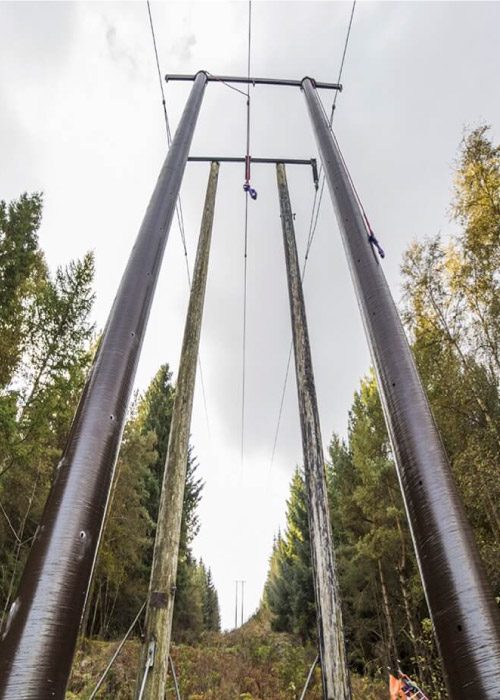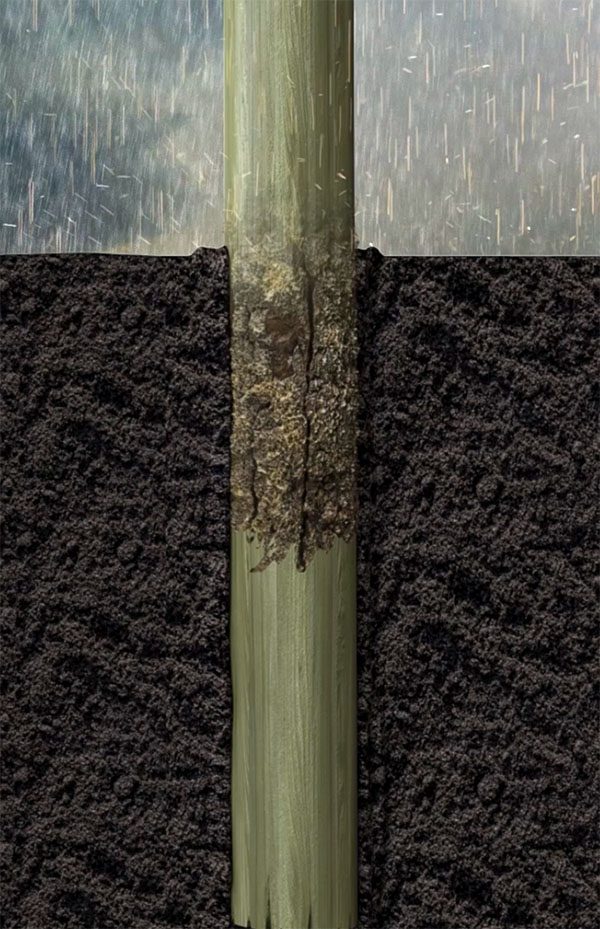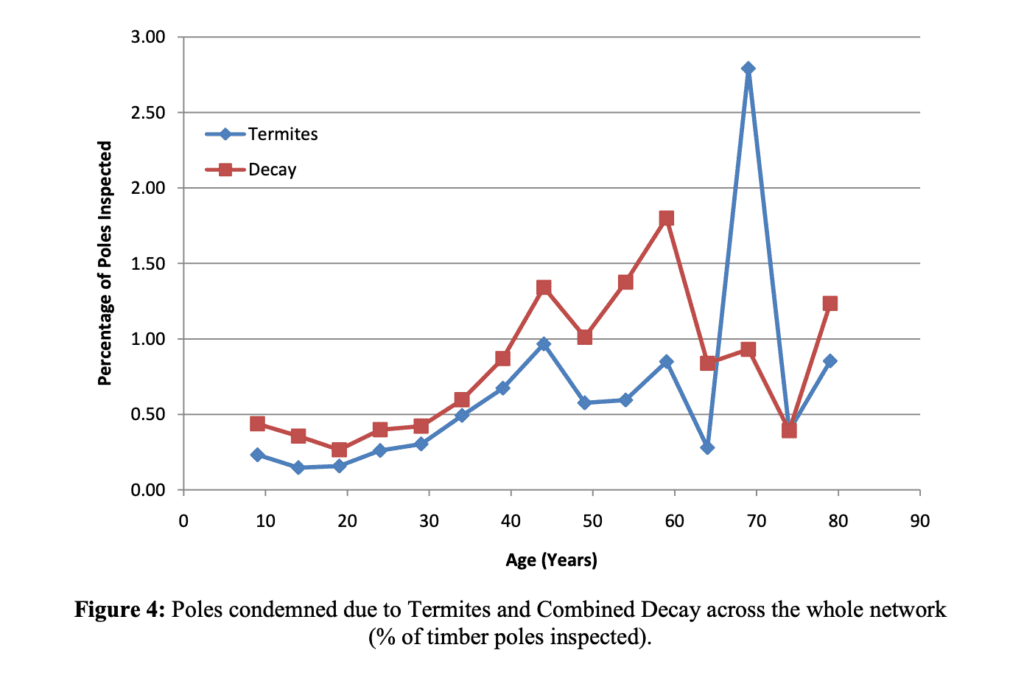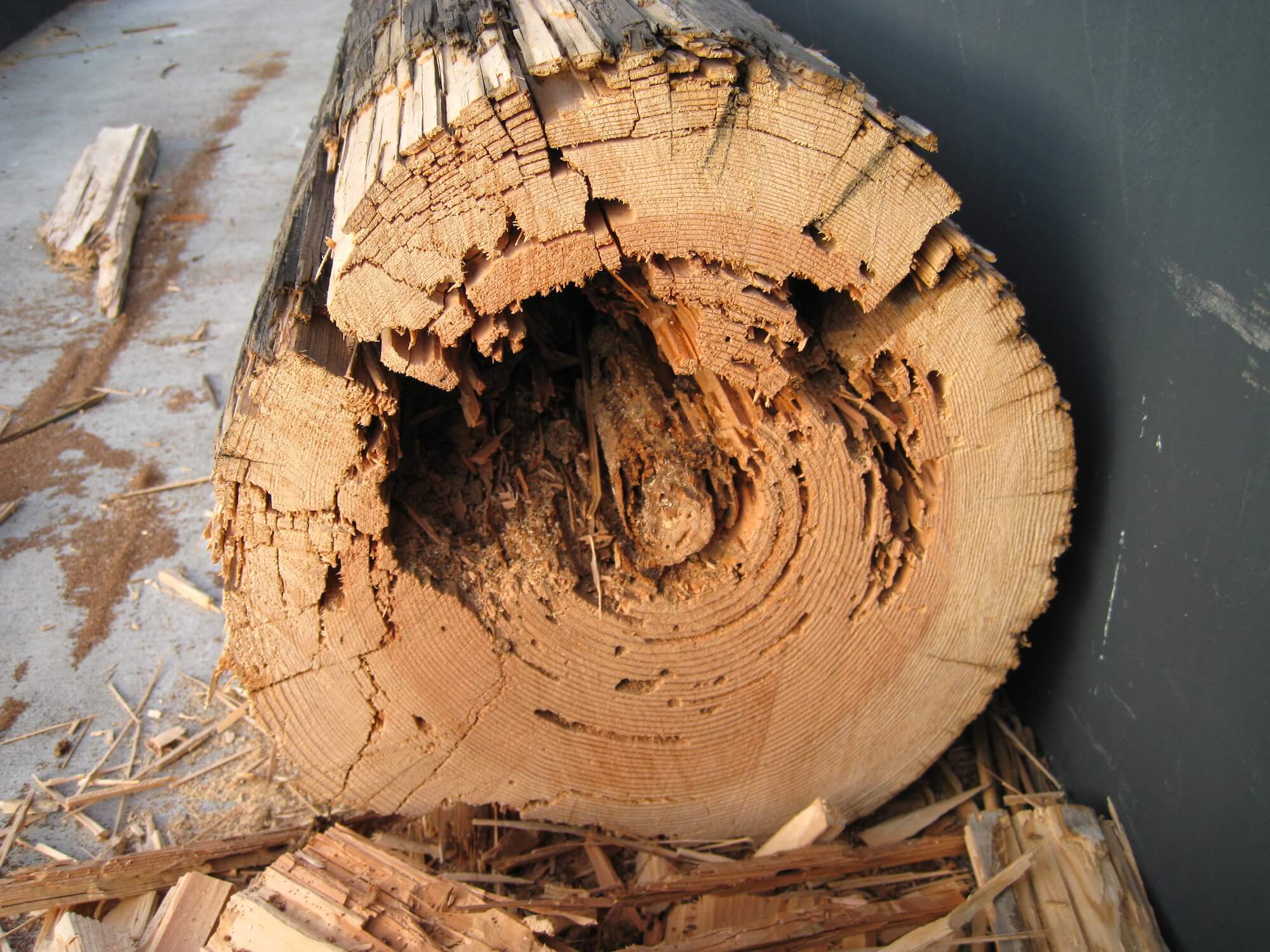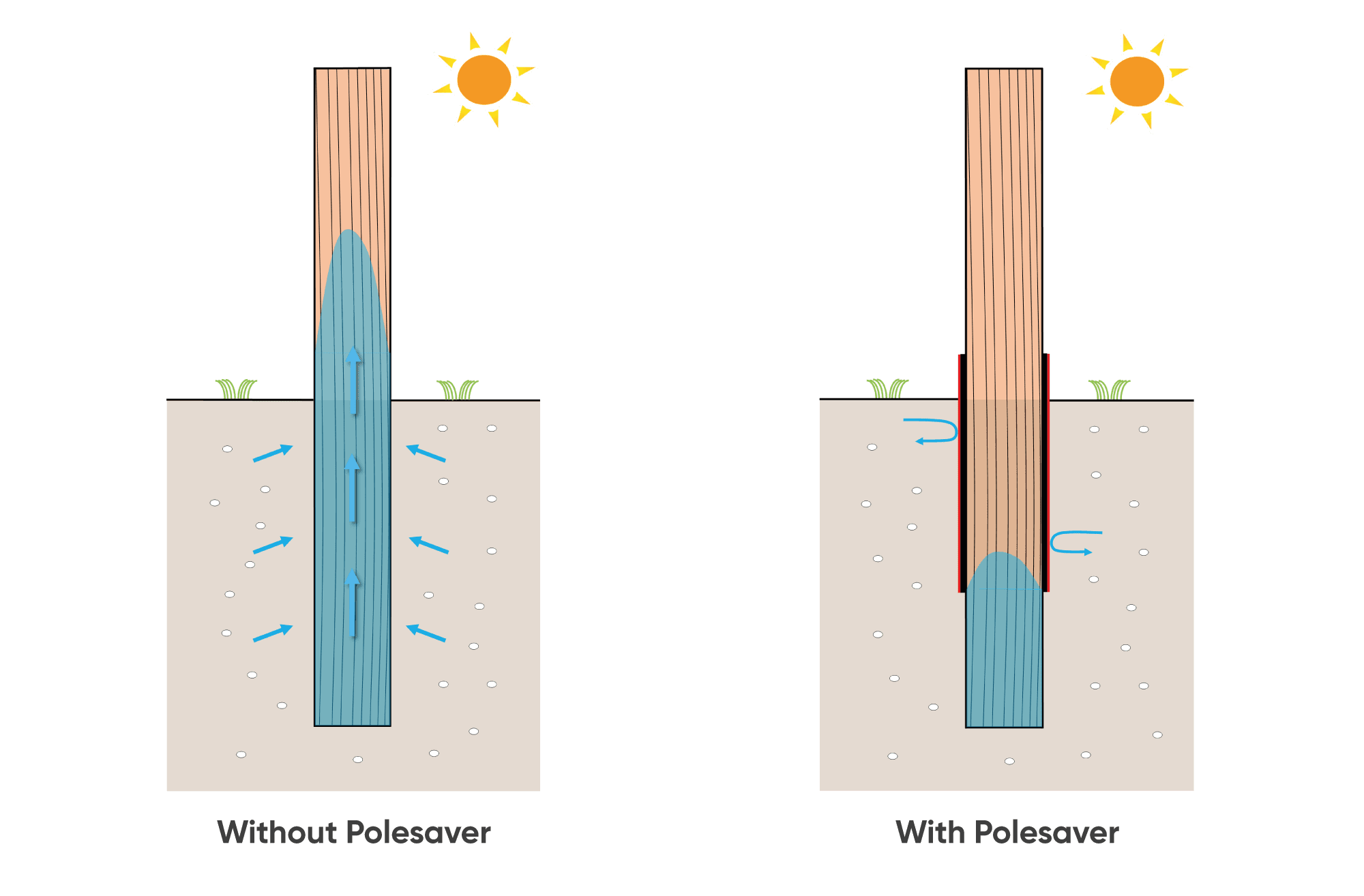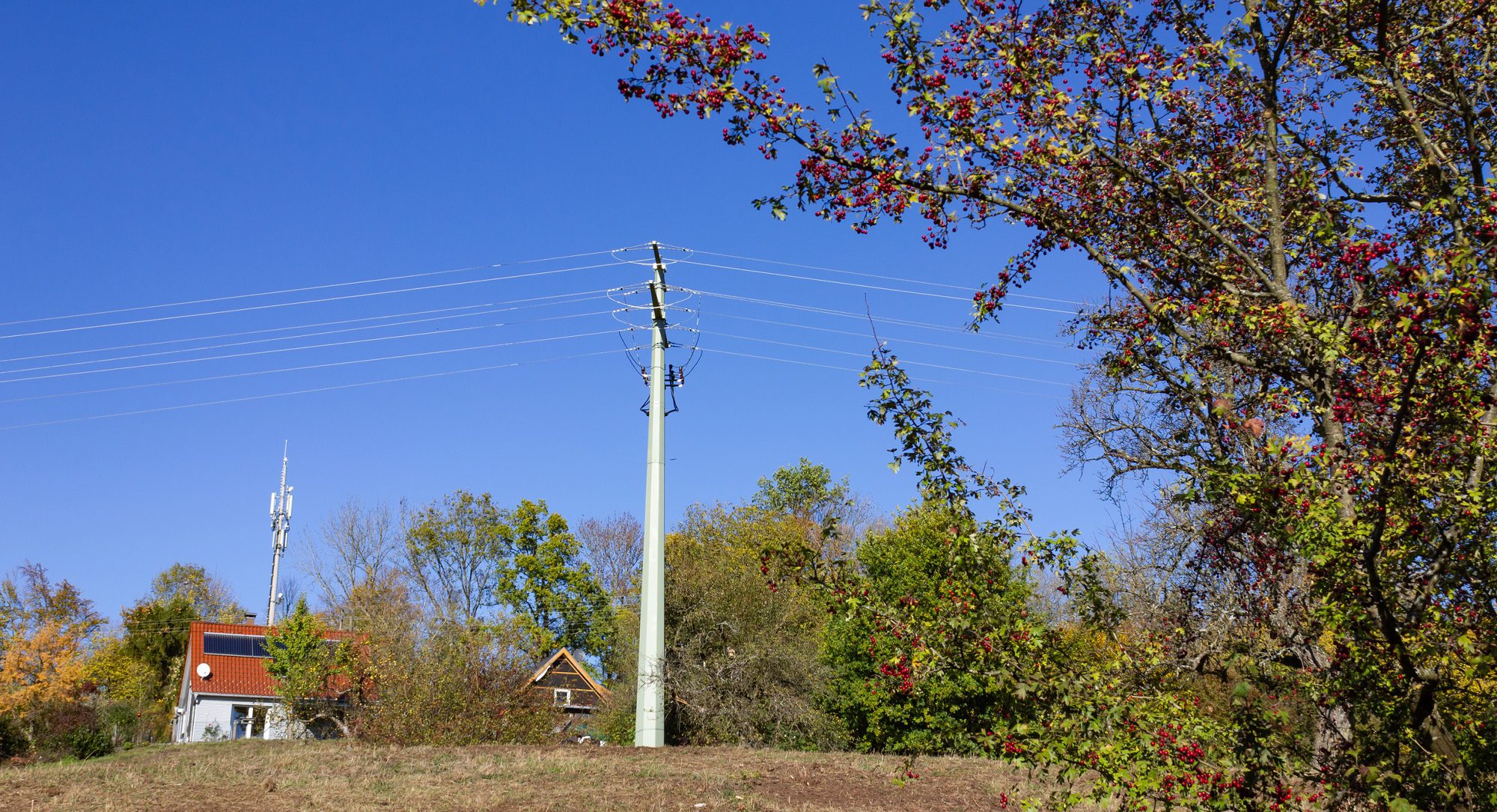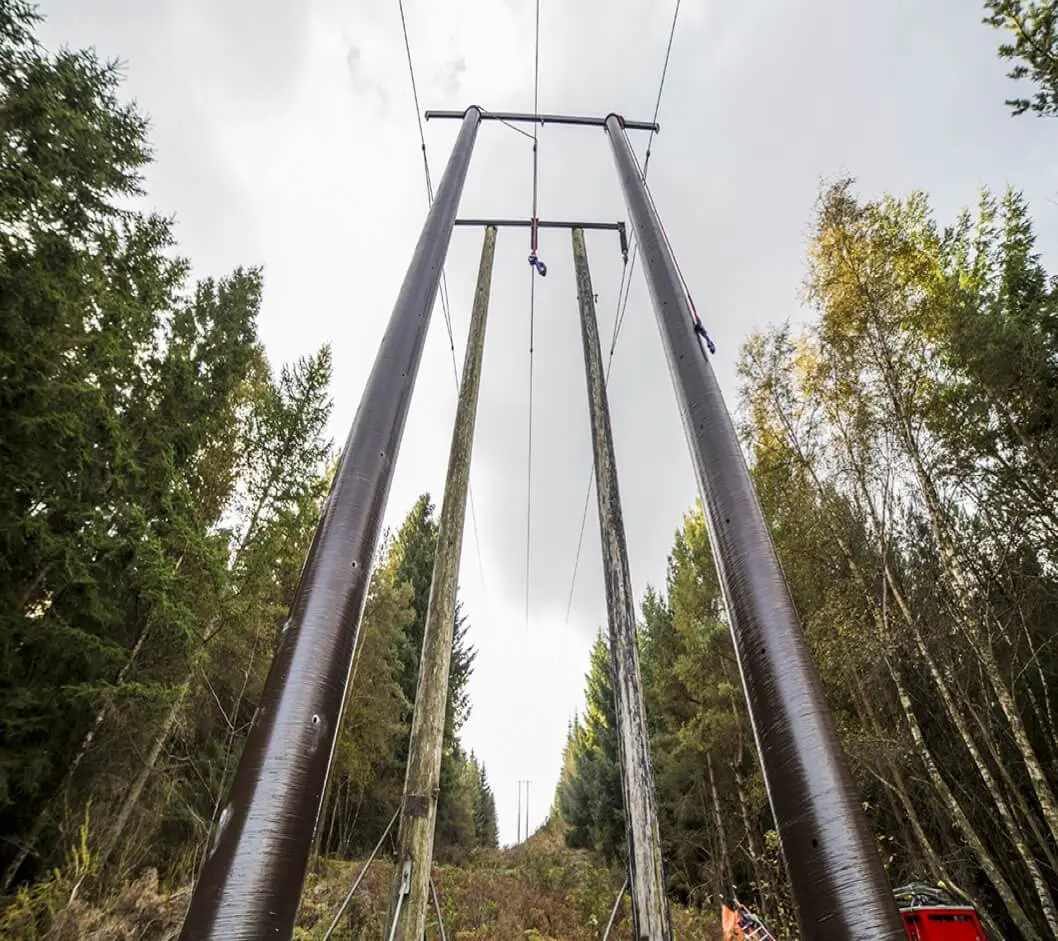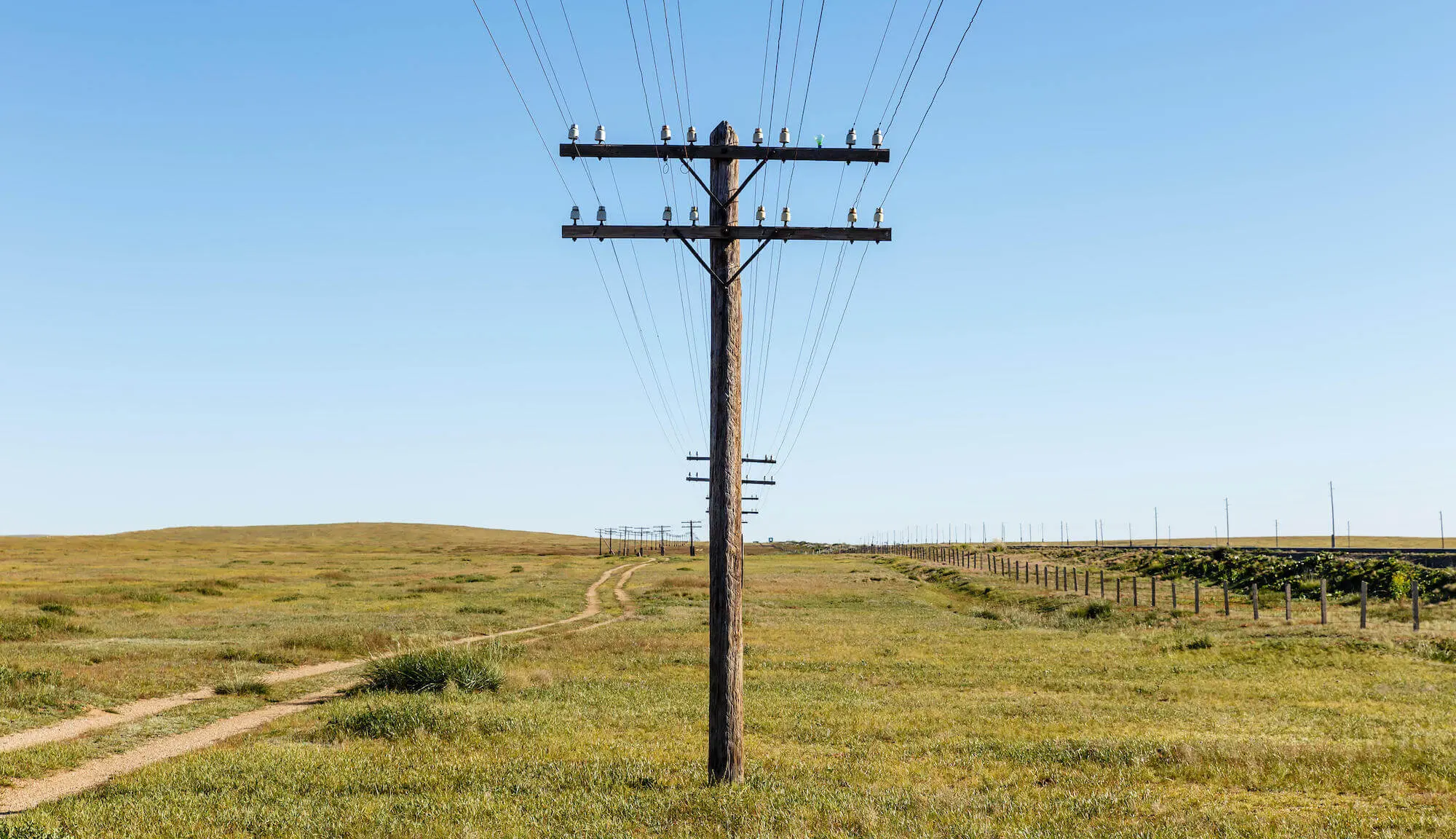Partial Vs Total Barriers
Ground Line Decay In Wooden Utility Poles
In several previous articles, we have talked about the effects of leaching, decay and rot at the ground line, and 6″ or so below it. At this level, wood preservatives lose effectiveness over time. Factors arising from climatic changes such as oxidation and the constant wetting and drying of the ground line pole section lead to leaching and the loss of preservatives. These factors lead to a reduction in the concentration of the biocides and water repellence for water repellent wood preservatives. Once this occurs, the pole becomes vulnerable to attack by wood-decaying organisms and termites.
There are an estimated 30,000 different types of wood-destroying fungi. These fungi break-down all kinds of organic matter, and over millions of years have become a highly efficient waste disposal system, so much so that they are the primary cause of wood decay. A combination of water, fungi, organisms, nutrients, and warm oxygenated soil near the ground line gives rise to a perfect environment for wood decay. Depending on geographical location, this could also lead to a more appealing target for the tiny yet very deadly termite!
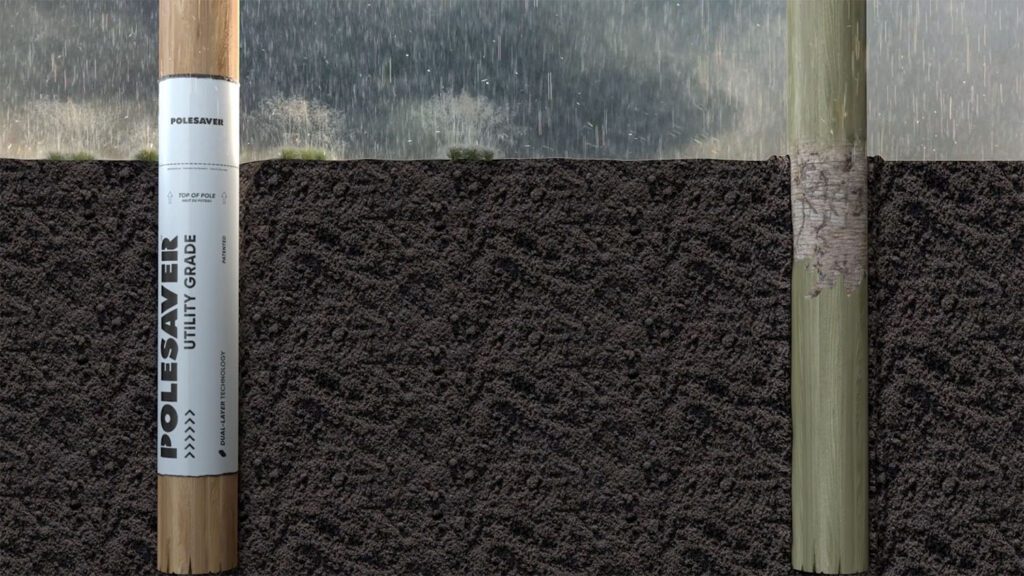
Ground Line Barrier Options
Because the most vulnerable section of a wooden utility pole lies at and just below the ground line, we can protect this area with a barrier product. Barrier products work in conjunction with the preservative treatment to increase the service life of the pole by eliminating or reducing the factors necessary for wood decay to occur whilst reducing or preventing loss of wood preservative. These products can inhibit moisture ingress, reducing the likelihood of leaching and increasing the life span of both the wood preservative and the pole itself. Furthermore, a lack of decaying wood and a sealed outer skin is an excellent termite deterrent. Barrier products fall into two categories; partial barriers and full barriers.
Partial Barriers
Partial barrier systems are available in several forms, including a simple ground line wrap, self-adhesive tape, and heat shrink tube. Other products include a wrap or heat shrink sleeve with a metal foil behind the outer wrap or a complete pull-on “bag” type product that covers the whole in-ground section of the pole. The issue with this type of product lies in the name – “partial”. As we have previously discussed the ingress of moisture, leeching, and fungi to the pole can allow decay and pole failure to occur. If a utility pole is only partially sealed at the ground line the potential for decay still exists. The main issue with these products is that all causes of decay can still access the pole behind the barrier, and water may track to the top of the sleeve/barrier creating a wet or damp band at the top of the sleeve where decay can then occur. Suppose the surface of the pole at the critical groundline does not have a complete seal. In that case, it is susceptible to all possibilities for rot and potential loss of preservative protection over time within the protected zone due to moisture movement behind the outer sleeve.
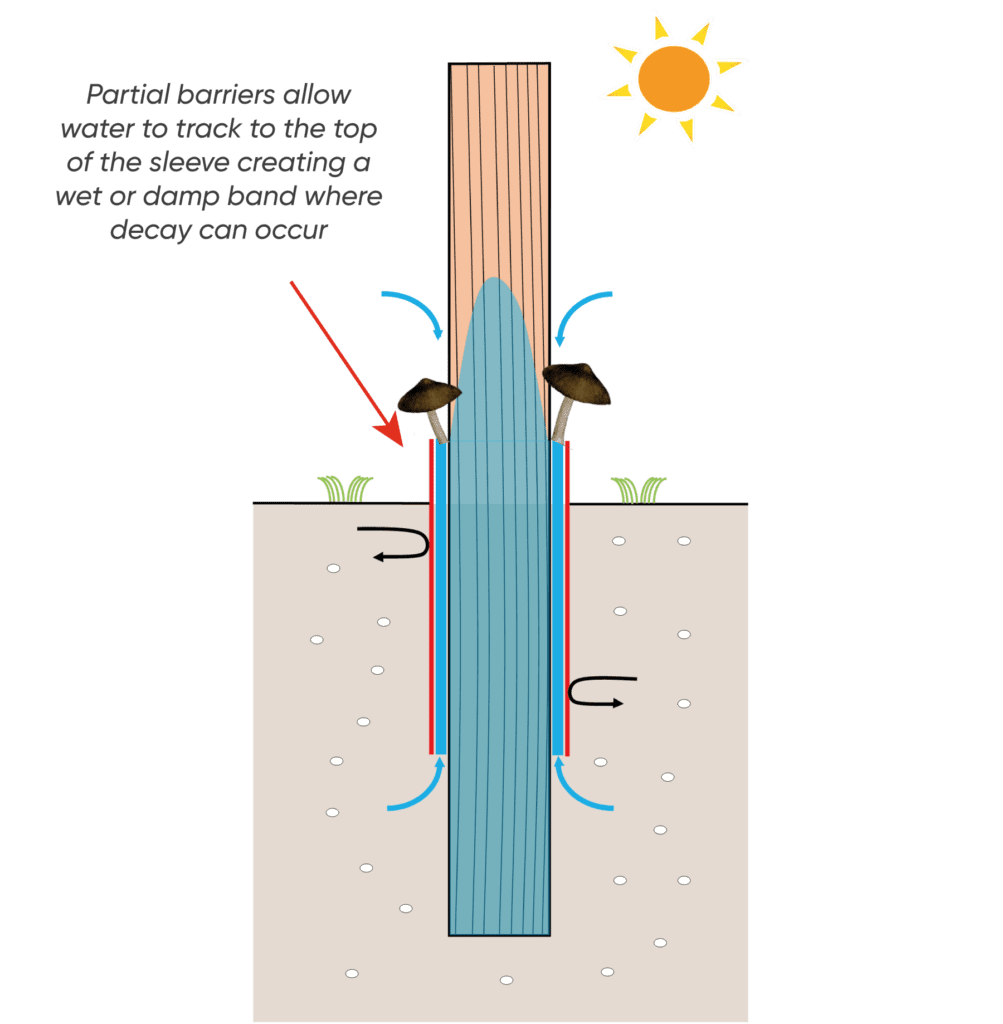
Total Barrier Protection
For barrier products to have a total seal and provide complete protection, the product must exclude all air and moisture from the ground line section of the pole. The image below shows the total barrier sleeve system in contrast to the above picture of a partial barrier sleeve. With a complete barrier system, the pole surface is fully sealed behind the outer sleeve excluding moisture, organisms and nutrients preventing the possibility for decay, giving significantly improved pole lifespan. The sealed barrier lowers the entry point for water, in turn reducing moisture in the upper part of the sleeve. The section of the pole above the sleeve experiences drying by the air keeping the moisture content below the 25% needed for decay. By working in conjunction with the wood preservative, the total barrier system prevents loss of wood preservative from wetting and drying, ensuring preservative protection within the sleeved zone over time.
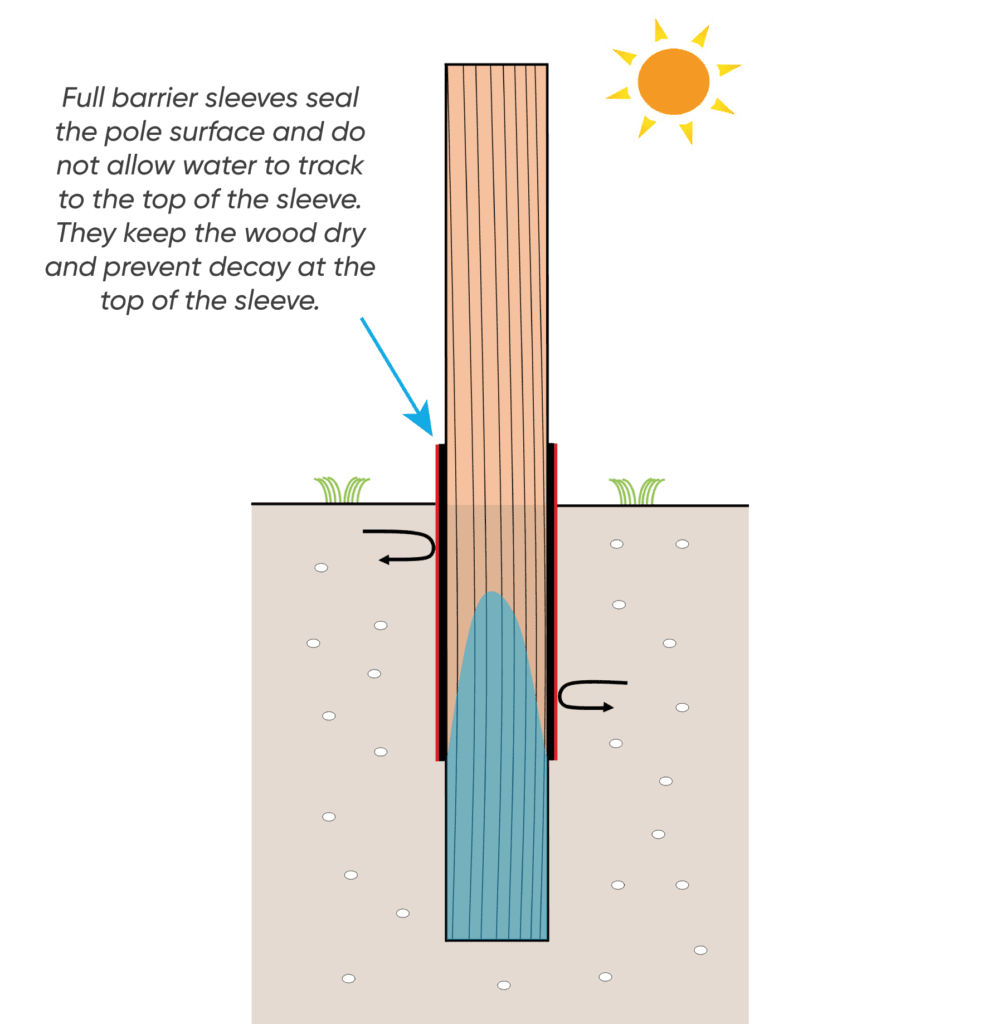
The Polesaver Sleeve
Polesaver sleeves comprise of high performance, long-lasting, dual-layer barrier technology that fully seals the wood surface behind the outer sleeve creating a total barrier to all the causes of decay. The sleeve consists of a high-performance UV stabilised outer film lined with a thermoplastic meltable sealant. Upon heating (see application method for further details), the thermoplastic sealant liner melts, and the outer sleeve shrinks down tightly onto the pole to create a robust, air and watertight seal to the pole surface excluding all of the factors necessary for decay to occur. The seal also prevents the loss of preservative treatment protection within the sleeved zone. Polesaver makes conventional ground-line decay impossible. The use of high-quality components backed by long term testing means that Polesaver sleeves are guaranteed to maintain a barrier to all the causes of decay for 50 years.
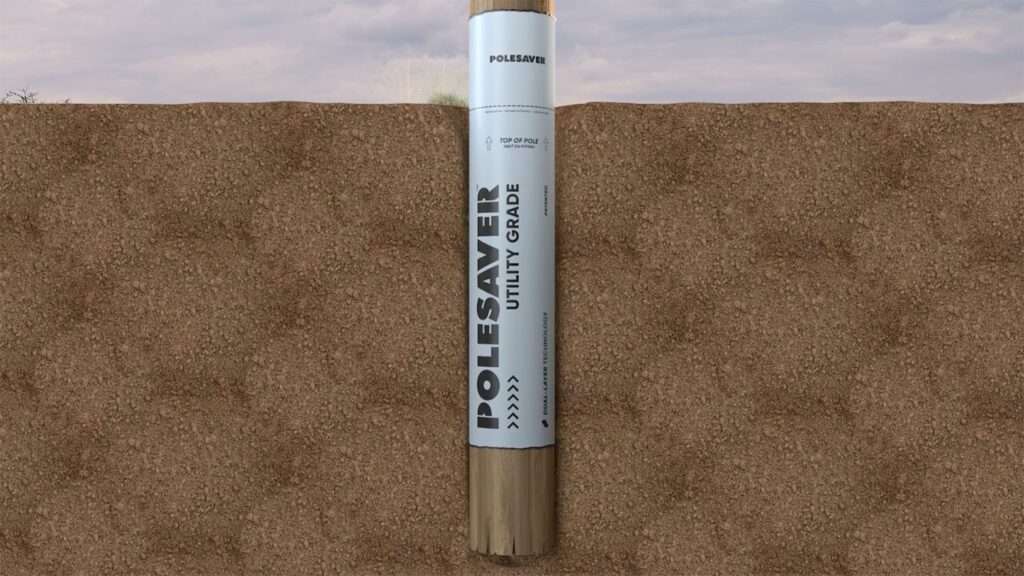
Polesaver Sleeve Features
Our full barrier sleeves have a range of innovative features. They are compatible with all forms of in-service pole decay testing, including hammer testing, spike or probe, resistograph and sound wave-based systems without affecting the results. A high-performance sealing tape to re-seal holes resulting from testing penetration is available. The tape will continue to protect the utility pole by reinforcing the high-quality seal of a Polesaver sleeve.
Polesaver sleeves include radio-frequency identification (RFID) tags with a unique electronic serial number. Using readily available reader technology such as a phone or PDA app, the serial number can allow quick and easy implementation of full asset management. A management tracking system can display instant data about pole location, installation date, pole supplier and the unique pole serial number as well as associated information on cables and pole-mounted switchgear etc. As well as being able to offer a range of software, we can also provide retro-fit tags to allow full asset management of other assets such as switchgear, transformers etc.
Polesaver sleeves are a tough and durable product; however, in some instances, the utility poles may be subject to a variety of extreme transport logistics and installation methods. During these periods damage might occur to a pre-applied sleeve. To combat this, we can supply Polesaver Plus. This additional durable wrap remains on the pole for the duration of the pole’s life and is low in cost and quick and easy to apply to the pole.

Total Barrier Benefits
There are significant benefits to using a total barrier protection system such as Polesaver, the greatest being a significantly longer pole life with a calculated life extension factor of at least x 2.5 based on long term independent field testing. Polesaver barrier sleeves also prevent the decay that leads to loss of strength over time, significantly improving both safeties when poles are climbed and greatly reducing the likelihood of pole failure in bad weather conditions.
With regards to maintenance, total barrier protection systems potentially allow for an increase in pole inspection intervals; therefore, a reduction in the percentage of poles inspected, potentially giving significant cost savings.
In some countries, costly pole remediation is a standard practice typically after 20 years or so in service. In North America, this practice is widespread, especially where numerous utilities share the same pole, making pole replacement more difficult. Replacement is time-consuming, and the costly process involves digging out around the ground line and re-treating the pole with toxic treatments or where decay is more advanced, the use of steel reinforcing or hand-applied glass fibre reinforcement. By preventing the onset of decay the use of total barrier sleeves can eliminate the requirement for this costly exercise giving significant costs savings
In Conclusion
Several barrier products exist in today’s market; however, none are as versatile or cost-effective as Polesaver, the future of total barrier protection. Our sleeves make ground line decay impossible. In the next blog, we will be looking in detail at the test data for total barrier sleeves and comparing this with the results for alternative methods of partial protection.
